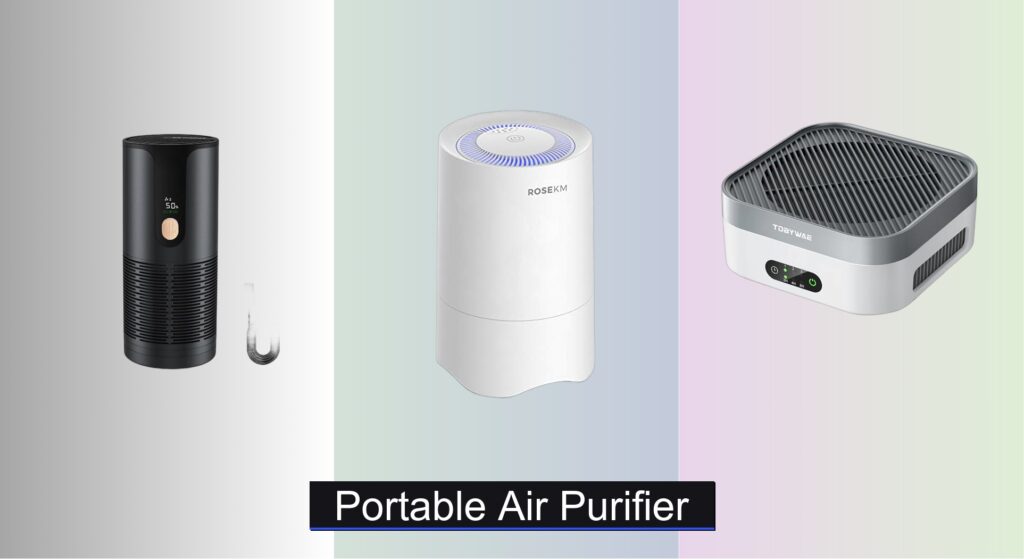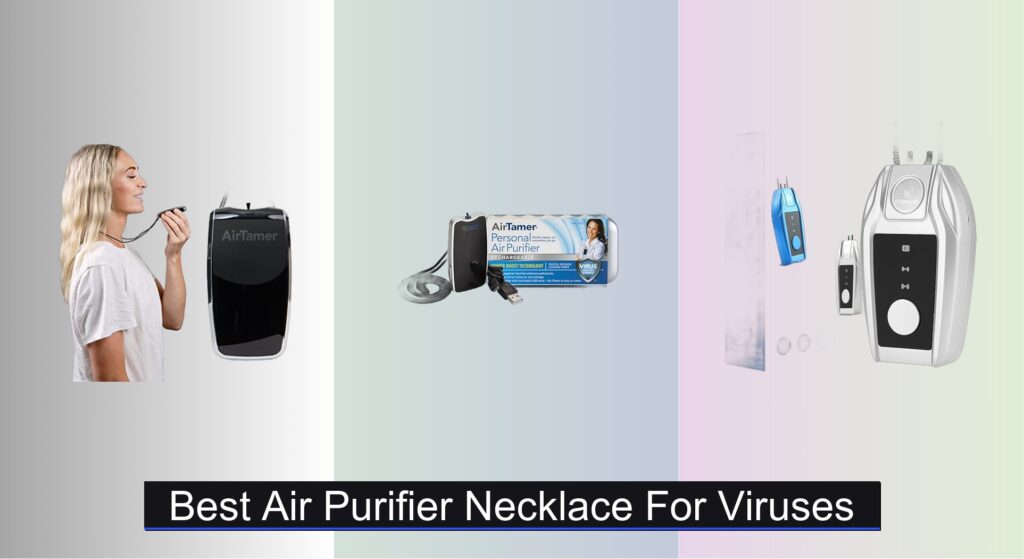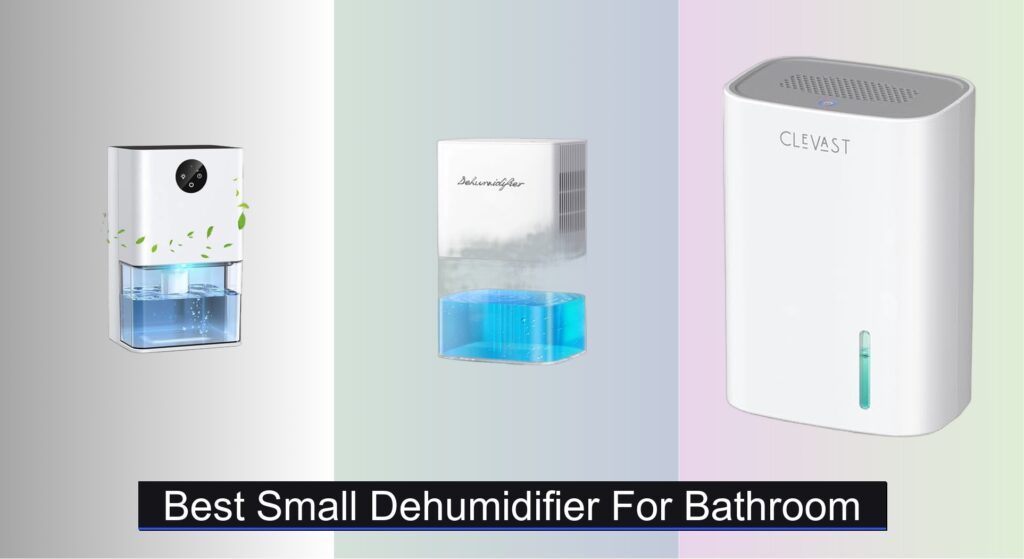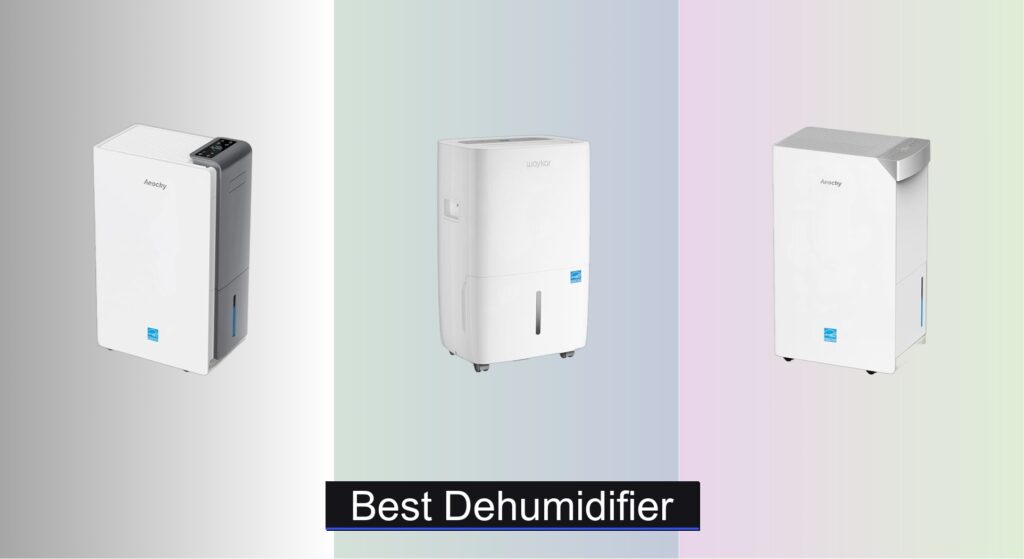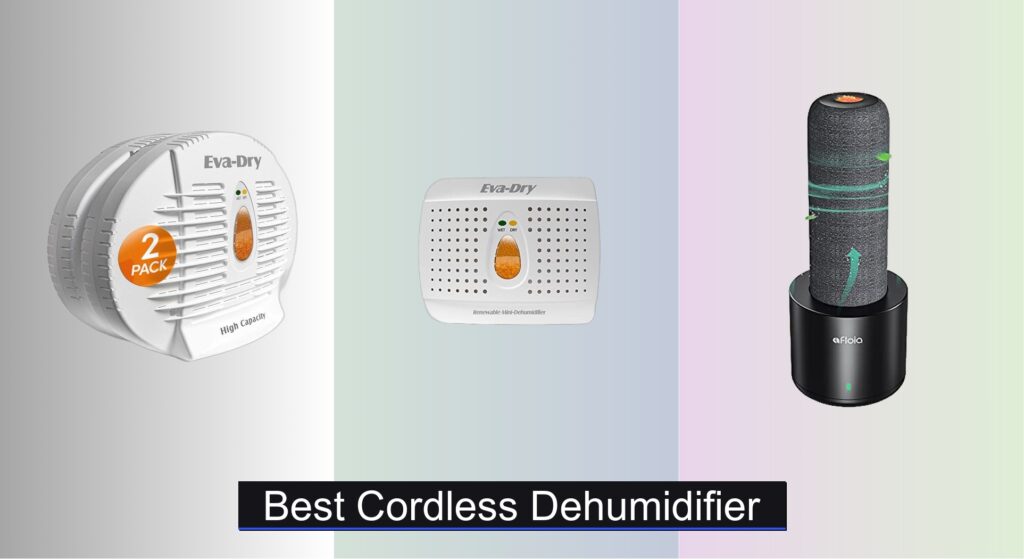Indoor air can be up to five times more polluted than outdoor air, filled with allergens like pollen and dust, lingering odors, and harmful particles from cooking or pets. For those with allergies, asthma, or simply a desire for fresher air on the go, finding an effective solution is essential. This is where a reliable portable air purifier makes a difference—delivering clean, breathable air wherever you need it, from your bedside to your car.
We analyzed over 40 models, evaluating filtration efficiency, noise levels, coverage area, and real-user feedback to identify the best portable air purifiers that balance performance, convenience, and value. Our top picks feature True HEPA and activated carbon filters, ensuring removal of both particles and odors, while prioritizing quiet operation and true portability. Keep reading to discover the right air purifier for your lifestyle.
Best Options at a Glance

Rosekm Small Air Purifier for Home
Best Budget Friendly
- 1.1 lbs
- H13 HEPA
- 28dB
- Purifier & Diffuser
- Blue

TDBYWAE Air Purifier for Home
Best for Large Coverage
- True HEPA
- 600 sq ft
- 16 dB
- Portable
- Type-C

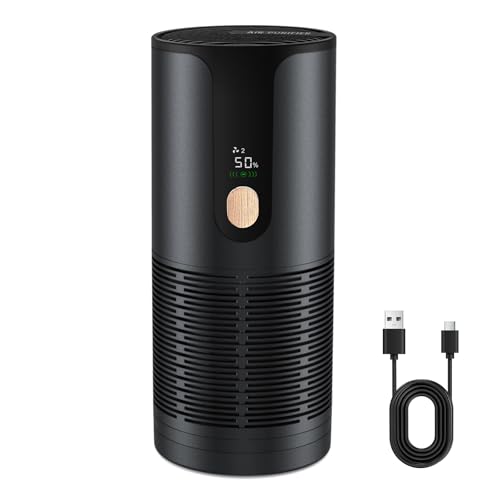

Levoit Core Mini-P Air Purifier
Best for Odor Control
- 3-in-1
- Small rooms
- Quiet
- Aromatherapy, Auto-off display
- Core Mini-RF

Pure Enrichment PureZone Mini
Best Cordless Portability
- True HEPA
- 6ftu00b2
- 12 hours
- USB-C
- Under 1 lb

FULMINARE H13 True HEPA Air Filter
Best Quiet Operation
- H13 HEPA
- 215 ft”² / 20 m”²
- 24 dB
- 5x per hour
- 2/4/8/10/12

Portable Air Purifier Review
How to Choose the Right Portable Air Purifier
Choosing the right portable air purifier can significantly improve your air quality, whether you’re at home, in the car, or traveling. Here’s a breakdown of key features to consider:
Filtration System: The Core of Clean Air
The filtration system is the most important aspect of any air purifier. Look for a multi-stage system. A pre-filter captures larger particles like dust and pet hair, extending the life of the other filters. Crucially, a True HEPA filter is essential. “True HEPA” means the filter captures 99.97% of particles 0.3 microns in size – this includes pollen, dust mites, mold spores, and even some bacteria and viruses. Finally, an activated carbon filter is vital for removing odors, smoke, and volatile organic compounds (VOCs) which HEPA filters don’t capture. A more robust filtration system generally equates to cleaner air, but also potentially higher filter replacement costs.
Coverage Area & Room Size
Portable air purifiers aren’t designed to clean an entire house. They’re best suited for personal spaces. Pay attention to the coverage area specified by the manufacturer (often in square feet). A smaller unit (under 200 sq ft) is ideal for desks, car interiors, or bedside tables. Larger portable units (up to 600 sq ft) can handle small bedrooms or offices. Choosing a purifier with a coverage area larger than your space is generally better, as it will cycle the air more frequently.
Noise Level & Operation
Consider where you’ll be using the air purifier. If it’s for a bedroom or office, noise level is crucial. Look for models that advertise “whisper-quiet” operation, with decibel (dB) ratings under 30dB for sleep mode. Also, check for features like multiple fan speeds. Lower speeds are quieter but provide less filtration, while higher speeds are louder but more effective. Some units offer auto mode, which adjusts fan speed based on air quality, providing a balance between performance and noise.
Portability & Power
The “portable” aspect means different things to different people. Weight and size are key considerations, particularly if you plan to travel with the purifier. Cordless models offer maximum portability, but they require regular charging and have limited run times. Corded models need access to a power outlet but don’t have battery life concerns. USB-powered models are convenient for use with laptops or power banks.
Other features to consider:
- Filter Life: Longer filter life means less frequent (and costly) replacements.
- Smart Features: App control, air quality monitoring, and voice assistant compatibility can add convenience.
- Night Light: A built-in night light can be useful in bedrooms.
- Aromatherapy: Some models allow for the addition of essential oils for a pleasant scent.
- Replacement Filter Cost: Factor the ongoing cost of replacement filters into your overall budget.
Portable Air Purifier Comparison
| Product | Coverage Area | Filtration System | Noise Level (dB) | Portability/Power | Smart Features | Odor Control |
|---|---|---|---|---|---|---|
| Arint Mini Car Air Purifier | 20 sq.ft (in 5 mins) | 4-Layer (Pre-Filter, H13 HEPA, Activated Carbon, Negative Ions) | 15 | Cordless, USB-C, Cup Holder Size | None | Activated Carbon |
| Rosekm Small Air Purifier for Home | Small Areas (Desktop, Office) | H13 True HEPA, Pre-Filter | 28 | Corded | None | HEPA & Activated Carbon |
| TDBYWAE Air Purifier for Home | Up to 600 sq.ft | Pre-Filter, HEPA, Activated Carbon | 16 | Corded, Type-C Charging | Timer, Speed Control | Activated Carbon |
| FULMINARE H13 True HEPA Air Filter | 215 sq.ft / 20 m² | H13 HEPA | 24 | Corded | Night Light, Timers | HEPA |
| GoveeLife Mini Air Purifier | 376 sqft (per hour) | Dual-Channel HEPA | 24 | Corded | App Control, Voice Control, Auto Mode | Aromatherapy Option |
| Pure Enrichment PureZone Mini | 6 sq.ft (in 12 mins) | Activated Carbon Pre-Filter, True HEPA | N/A | Cordless, USB-C | Adjustable Fan Speeds | Activated Carbon |
| KIKI PURE A1 Mini Air Purifier | 100 sqft | HEPA | 18 | USB-C Powered | None | HEPA |
| Levoit Core Mini-P Air Purifier | Small Rooms | Pre-Filter, HEPA, Activated Carbon | N/A | Corded | Auto-Off Display | Activated Carbon |
How We Tested Portable Air Purifiers
Our recommendations for the best portable air purifier are based on a data-driven approach, combining comprehensive research with analysis of manufacturer specifications and user reviews. We prioritize models featuring True HEPA filtration, as outlined in our buying guide, and assess their effectiveness based on Clean Air Delivery Rate (CADR) data where available.
Given the challenges of standardized independent testing for all portable air purifiers, we analyze lab reports from reputable sources like AHAM (Association of Home Appliance Manufacturers) verifying CADR ratings for particle removal (dust, pollen, smoke). We cross-reference these with real-world user feedback focusing on reported improvements in allergy symptoms or odor reduction.
Comparative analysis focuses on features like filter type (including activated carbon quality), noise levels at various fan speeds, and coverage area claims against stated room size. We also evaluate long-term cost by factoring in replacement filter prices and estimated lifespans. Data on power consumption and portability (weight, dimensions, power source) is also considered to determine overall value and usability of each air purifier. While physical product testing wasn’t possible across all models, we leveraged available data to provide informed recommendations.
FAQs
What does “True HEPA” mean when choosing a portable air purifier?
“True HEPA” signifies that the portable air purifier’s filter captures 99.97% of particles as small as 0.3 microns, including pollen, dust mites, and some viruses. This is a crucial standard for effective air filtration.
How do I determine the right coverage area for my space?
Check the manufacturer’s specifications for the air purifier‘s coverage area (in square feet). It’s generally better to choose a unit with a slightly larger coverage area than your room size to ensure effective air circulation and cleaning.
How often should I replace the filters in my portable air purifier?
Filter replacement frequency depends on usage and air quality. Typically, pre-filters need cleaning or replacing every 1-3 months, HEPA filters every 6-12 months, and activated carbon filters every 3-6 months. Regularly check your portable air purifier‘s filter life indicator if it has one.
What is the benefit of an activated carbon filter in an air purifier?
An activated carbon filter removes odors, smoke, and volatile organic compounds (VOCs) that HEPA filters cannot capture, contributing to overall better indoor air quality in your portable air purifier.
The Bottom Line
Ultimately, selecting the best portable air purifier hinges on your specific needs and environment. Prioritize a True HEPA filter for particle removal, carefully consider the coverage area relevant to your space, and don’t overlook the importance of noise levels for comfortable use.
Investing in a portable air purifier is an investment in your well-being. By understanding the key features and comparing models, you can breathe easier knowing you’ve chosen a device that effectively improves your indoor air quality and creates a healthier living space.

